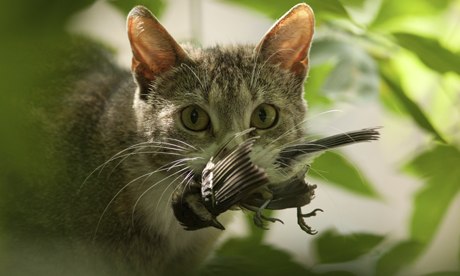BORROTO, R., PLASENCIA, I. R., & ALBERNAS, J. H. 2013. Valoración rápida de gatos ferales y otros mamíferos invasores en cayo Santa María, norte de Villa Clara, Cuba. Solenodon, 11: 120-130. (In Spanish, with English abstract)
The presence of cats in touristic and natural areas was evaluated in Santa María key, North of Villa Clara, Cuba. Trapping methods in touristic areas produced a low index of 0.1 cats/trap-night, possibly due to the cat rejection of traps; however, visual counts resulted in a high index of 42.8 cats/ha, with a minimum of 1.7 cat/ha in two hotels. Trapping in natural areas was not successful due to the consumption of bait by ants, other reasons for trap failure are discussed, and the cat evaluation was indirectly evaluated. In touristic areas the dog/ha index varied from 11.3 to 0.1 and the dogs entered protected areas constantly. The presence of black rats was detected indirectly by skeletal and pellet remains in a cave and owl perchs (Tyto alba). The implication of the presence of cats and other invasive mammals in touristic areas and the importance of control and management to avoid faunal impacts in the protected area are discussed.
The presence of cats in touristic and natural areas was evaluated in Santa María key, North of Villa Clara, Cuba. Trapping methods in touristic areas produced a low index of 0.1 cats/trap-night, possibly due to the cat rejection of traps; however, visual counts resulted in a high index of 42.8 cats/ha, with a minimum of 1.7 cat/ha in two hotels. Trapping in natural areas was not successful due to the consumption of bait by ants, other reasons for trap failure are discussed, and the cat evaluation was indirectly evaluated. In touristic areas the dog/ha index varied from 11.3 to 0.1 and the dogs entered protected areas constantly. The presence of black rats was detected indirectly by skeletal and pellet remains in a cave and owl perchs (Tyto alba). The implication of the presence of cats and other invasive mammals in touristic areas and the importance of control and management to avoid faunal impacts in the protected area are discussed.





